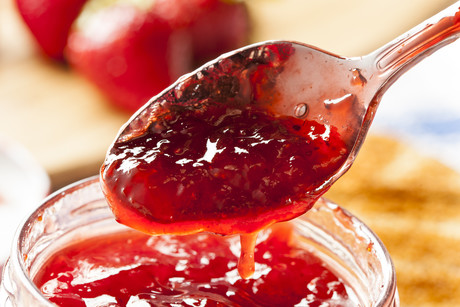Food profiling: the analytics of authenticity

The quality of the raw materials and semi-finished products is a critical aspect of the procurement chain of the food industry. To check the authenticity based on the accompanying paperwork alone is a risky undertaking. Mixtures can happen by mistake in the globalised trade, but can also be the work of fakers. Modern methods of food profiling can provide security for processors and consumers.
Is it actually real strawberry jam? And do the fruits originate from Queensland as the supplier promised? Authenticity is not only important to the consumer but also to the food producer — after all, the buck stops with her/him and s/he has to be sure that what is printed on the label and advertised is what s/he is supplying.
Classic analytical techniques are great for determining the fruit and sugar content of the jam but not the provenance of the ingredients.
Enter the isotope cosmos
At every place on the globe the mix of the stable isotopes is different. These isotope patterns can be used to identify the source of products. If the product contains water the geographical isotope pattern of the hydrogen and oxygen will enable the precise identification of the origin of the product. The isotope signatures nitrogen and sulfur reflect the soil where a product was grown. Each region has its own individual isotopic composition — a comparison per database can reveal whether the strawberries in the jam came from Queensland or Korea.
The isotope fingerprint of products can be determined using mass spectrometers.
This technology has been complemented recently by magnetic resonance spectroscopy (nuclear magnetic resonance, NMR), which has established itself as a method for routine use. It enables both targeted and non-targeted analyses to be carried out.
NMR demonstrates its strengths when a multitude of data is necessary for an authenticity evaluation. The multimarker method enables known, unexpected as well as hitherto unknown falsifications to be recognised. For example, with fruit juice more than 30 substances are decisive for its evaluation. The evaluation is based on regularly updated databases with over 16,000 reference juices that are sourced from all over the globe. Deviations indicate problems that are characteristic, for example, for the adding of sugar or for pesticide contaminations. The classification enables similar types of fruit such as oranges, blood oranges and mandarins to be differentiated. And that is not all: the software can determine the geographical origin as well as the difference between direct juice and diluted juice.
Foodomics
In the face of constantly growing demands, scientists are continually working on new opportunities that give more detailed insight into the composition of food. The latest example of this is the analytic instruments that are bundled under the term foodomics. The system-wide approach not only encompasses the clear identification of the raw materials implemented, but also the determination of origin by exogenous factors.
Metabolomics is one of the technologies these instruments use. The focus lies on the characterisation of the so-called metabolome. This means the entirety of the low molecular compounds that are contained in a foodstuff. In addition to the animal and vegetable metabolites, these include residues and contaminants as well as substances that are generated during the processing.
The aim of one of the projects sponsored by the Federal Ministry of Food and Agriculture in Germany is to determine the origin and authenticity of foodstuffs using non-targeted metabolomic analysis. The non-targeted approach allows a relative quantification of all reproducible, recordable metabolites. To this end, NMR methods are coupled with other methods such as the time-of-flight mass spectrometry and evaluated using gas and high pressure liquid chromatography.
“Basically we compare the molecular, nanoscale fingerprints of the substances and processes in foodstuffs with known references,” explained Prof. Dr Markus Fischer, director of the Institute for Food Chemicals at Hamburg University. The statement illustrates the high demand of the methodology and gives an indication of the potential it holds. Already small differences in the metabolome suffice to be able to come to conclusions regarding the type, the origin or the processing.
Food manufacturers who want to protect the integrity of their brands will find a comprehensive palette of solutions at Anuga FoodTec from 20 to 23 March. The exhibiting companies will not only impress with cutting-edge laboratory equipment at the Cologne fairgrounds, but also with a comprehensive offer of services.
Further information is available at: http://www.global-competence.net/food/.
Six beverage trends predicted for 2026
Demand for customisation, 'protein-ification' and sustainable storytelling are some of...
Making UHT processing less intensive on energy
A nutritional beverages company was seeking a more sustainable way to produce UHT beverages using...
Tasty twist for chocolate alternatives
Food scientists develop two novel flavour-boosting techniques to transform carob pulp into a...











